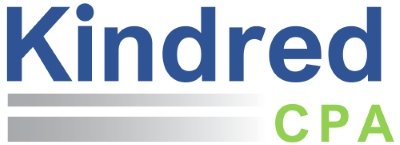Tax season might be behind us (hooray!), but there are still a few smart steps you can take now to wrap things up smoothly and…
 With the March 11, 2021 passage of the American Rescue Plan Act (ARPA), two long-standing tax credits for taxpayers with minor children received significant enhancements.
With the March 11, 2021 passage of the American Rescue Plan Act (ARPA), two long-standing tax credits for taxpayers with minor children received significant enhancements.
Child Tax Credit
Background:
The Child Tax Credit (CTC) previously provided up to a $2,000 credit per qualifying child. This credit began to phase out for taxpayers with adjusted gross income (AGI) > than $400,000 for joint filers and > $200,000 for single filers. The credit was also limited to children under the age of 17 and was only considered partially refundable (a maximum of $1,400 per child could be received if the taxpayer did not have that much in total tax liability).
What Changes for 2021:
- The maximum age is expanded to include children who have not turned 18 by the end of 2021.
- The CTC increases to a maximum of $3,000 per qualifying child over the age of 5 and $3,600 for children under the age of 6. However, these increases begin to phase out for taxpayers with AGI > than $150,000 for joint filers, > $112,500 for head of household filers and > $75,000 for single filers. This new phaseout is limited and reverts to the previous phaseout rules once the calculated credit drops to $2,000 per child.
- The CTC is fully refundable for taxpayers with a principal place of abode in the United States for more than half the year. This means a taxpayer can receive the full amount of the credit even if their tax return generated no tax liability.
- A portion of the CTC will now be disbursed in temporary advance payments. The plan is for these advance payments to occur monthly from July through December and the amounts of the advance payments will be calculated at 1/12 of the anticipated annual child tax credit for the taxpayer. For example, a taxpayer with two qualifying children entitled to a $6,000 CTC in 2021 will receive advance payments of $500/month for July-December. The balance of any CTC not distributed via advance payments can be claimed on the 2021 tax return.
- The IRS will establish an online portal to allow taxpayers to update information impacting the calculation of the 2021 advance payments or to allow taxpayers to opt out of the advance payments.
- The IRS will determine eligibility for the advance payments by looking at the taxpayers’ 2020 tax return, or if they are not yet filed, their 2019 tax return.
What Should I Do Now:
- No immediate steps are necessary for most taxpayers.
- If you have not yet filed your 2020 tax returns and you believe your CTC calculation would not be accurate based upon your 2019 tax return, consider contacting us about preparing your 2020 tax returns as soon as possible.
- If you need to update information concerning your 2021 CTC calculation (including adding the birth of a child during 2021), enter this information on the IRS online portal as soon as it has been made available.
Child and Dependent Care Credit
Background:
The Child and Dependent Care Credit (CDCC) provides a credit for expenses paid by the taxpayer for the care of qualifying individual(s) so that the taxpayer can be gainfully employed. The credit was based upon the first $3,000 of expenses for one qualifying child or $6,000 for more than one. In two-parent households, both parents must have earned income to qualify for the credit and under most circumstances, the child receiving care must be under the age of 13 when the care was provided. The maximum credit was $1,050 for taxpayers with one qualifying individual and $2,100 for taxpayers with two or more. However, the credit began to quickly phase out for taxpayers with AGI > $15,000, resulting in maximum credits for most taxpayers of only $600 for one qualifying individual and $1,200 for two or more. The credit was also nonrefundable – meaning the credit was limited by the taxpayers’ tax liability.
What Changes for 2021:
- The CDCC is fully refundable for taxpayers with a principal place of abode in the United States for more than half the year. This means a taxpayer can receive the full amount of the credit even if their tax return generated no tax liability.
- The credit is calculated by multiplying an applicable percentage by the first $8,000 of expenses for one qualifying child or the first $16,000 for more than one. The applicable percentage ranges from 50% to 1%, depending on the taxpayers’ AGI.
- The phaseout range for the credit is greatly expanded. For taxpayers with AGI < $125,000, the credit is calculated at 50% of qualifying expenses and gradually reduces to 20% of qualifying expenses for taxpayers with AGI between $125,000 and $185,000, where it stays until AGI exceeds $400,000. The credit is eliminated for taxpayers with AGI > $440,000.
- These changes are significant and could greatly reduce your income tax liability. For example, a taxpayer with two qualifying individuals, $16,000 of qualifying expenses and AGI of $100,000 would have had a $1,200 CDCC on their 2020 tax return. Under these same circumstances, the credit would increase to $8,000 on their 2021 tax return.
What Should I Do Now:
- No immediate steps are necessary for most taxpayers.
- If you are currently having amounts withheld from your paycheck for an employer-sponsored dependent care flexible spending account (FSA), you may want to consider talking to your tax preparer. Under certain circumstances, the enhanced CDCC may make claiming the credit more beneficial than paying the childcare costs with pre-tax FSA funds (which are ineligible to be used for the credit).
- Consider confirming your childcare provider will provide you the appropriate paperwork documenting your childcare expenses at the end of the year.
- Provide this documentation with the rest of your tax documents when it is time to file your 2021 tax return.



